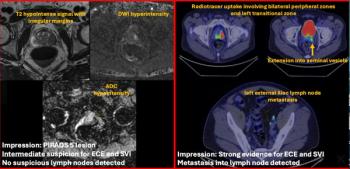
Blood Flow Changes Found in Children with Chronic Kidney Disease
Magnetic resonance imaging shows changes in cerebral blood flow among children with CKD.
Arterial spin labeling uncovered blood flow changes, perhaps reflecting impaired brain function among children with chronic kidney disease (CKD), according to a study published online in the journal Radiology.
Researchers from Taiwan and the United States performed a prospective study to investigate the pathophysiologic effects of CKD on brain function in children. Seventy-three children (mean age 15.80 years) and 57 controls (mean age 15.65 years) participated in the study. The researchers obtained cerebral blood flow measurements (CBF) with an MR imaging arterial spin labeling scheme. All participants underwent neurocognitive measurements with traditional and computerized batteries.
“It’s not clear if the brain problems from kidney disease seen in adults are secondary to the hypertension produced by the disease,” coauthor John A. Detre, MD, a professor of neurology and radiology, director of the Center for Functional Neuroimaging in Radiology and vice chair for research in neurology at the Perelman School of Medicine at the University of Pennsylvania in Philadelphia, said in a release. “In our study, we wanted to look at patients with early kidney disease, before they’ve experienced decades of high blood pressure. In doing this, we could separate the kidney disease effects from those of chronic high blood pressure.”
The results showed that patients with CKD showed higher CBF compared with controls. This was attributable to reduced hematocrit level (mean, 60.2 mL/100 g/min 6 9.0 versus 56.5 mL/100 g/min 6 8.0, respectively). White matter CBF showed correlation with blood pressure. This was a finding suggestive of altered cerebrovascular autoregulation. Regional CBF differences between patients and control subjects included regions in the default mode network. In patients with CKD, positive extrema in the
precuneus showed a strong correlation with executive function.
“[This] may indicate compensatory hyperactivity, in which the brain regions are working extra hard to maintain performance,” Detre said in the release. “Another possibility is that there’s a disturbance in the regulation of blood flow in these patients.”
The researchers concluded that systemic effects of estimated glomerular filtration rate, hematocrit level, and blood pressure on CBF and alterations in
regional CBF may reflect impaired brain function underlying neurocognitive symptoms in CKD. These findings further characterize the nature of alterations in brain physiologic features in children, adolescents, and young adults with CKD.
“Cerebral blood flow is a critically important physiological parameter that you can measure in just a few minutes with arterial spin labeling,” Detre said. “This technique provides a noninvasive way of quantifying cerebral blood flow that doesn’t require use of contrast agent, which is contraindicated in patients with kidney dysfunction.”
Newsletter
Stay at the forefront of radiology with the Diagnostic Imaging newsletter, delivering the latest news, clinical insights, and imaging advancements for today’s radiologists.




























